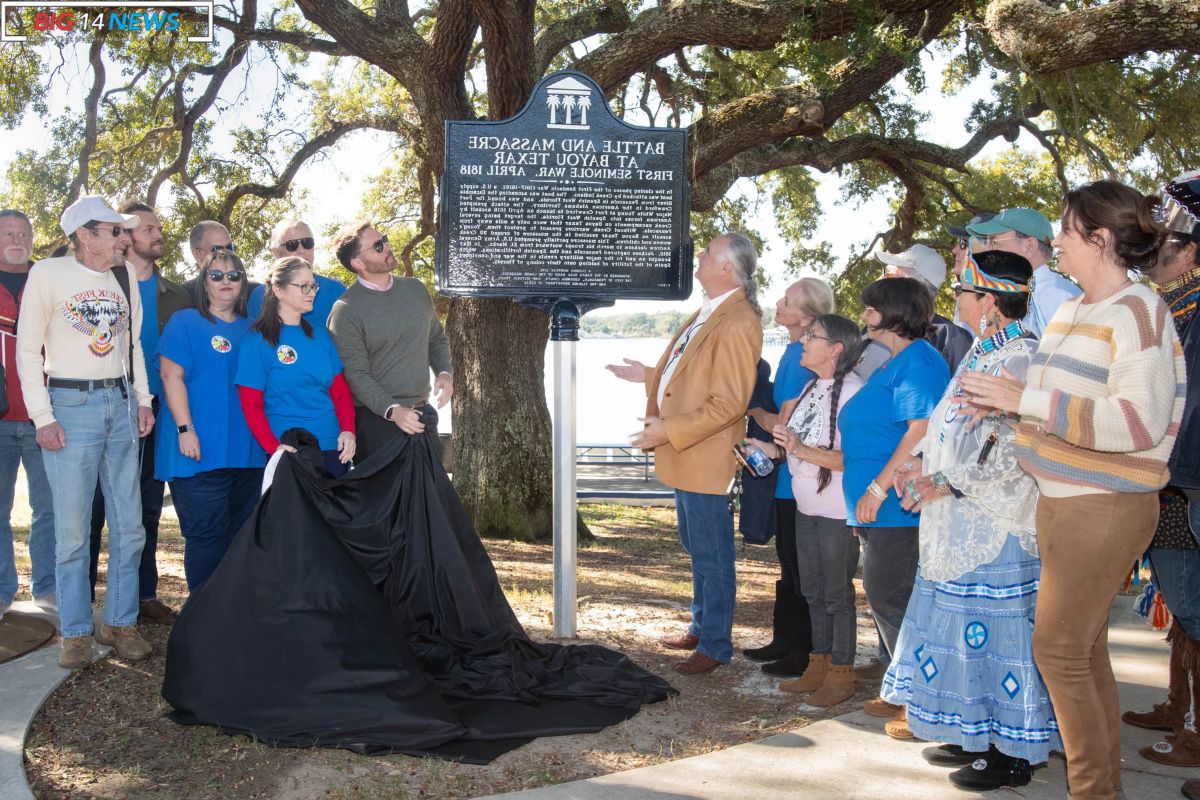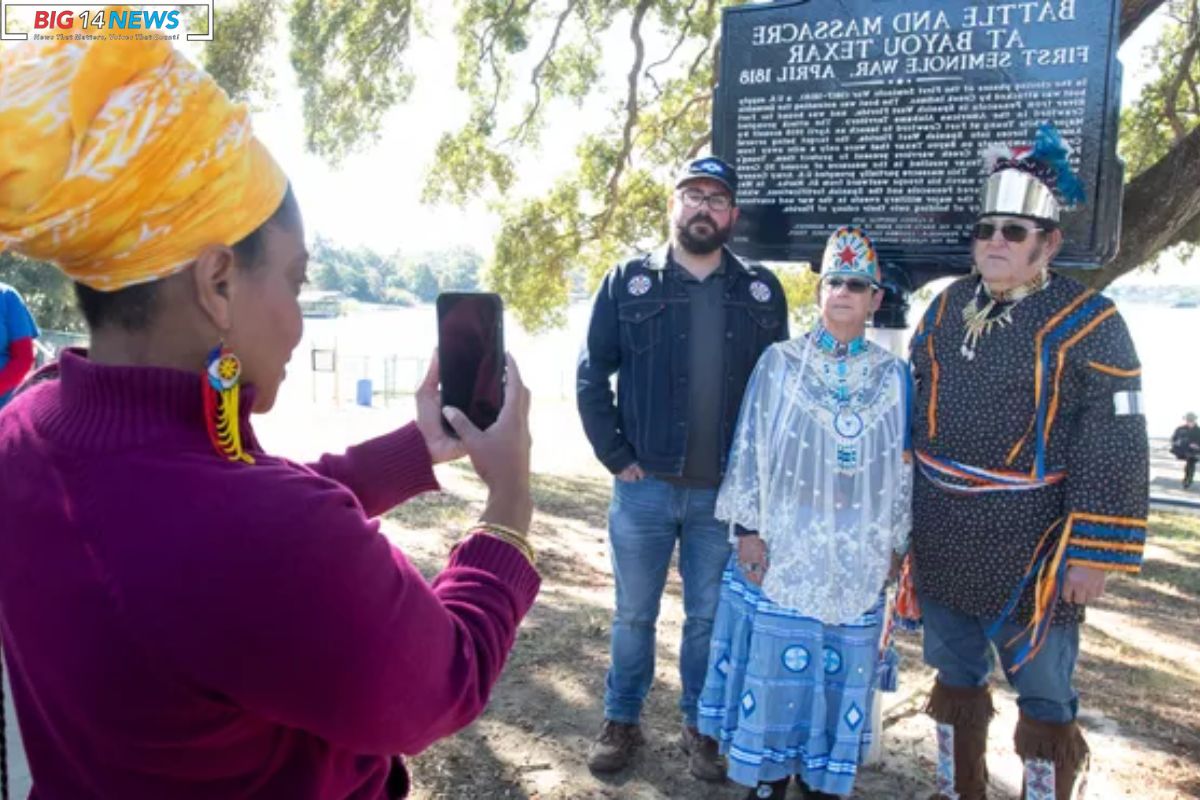Bayou Texar Forgotten Massacre Revealed: Folks flock to Bayview Park every year, soaking in the serene scenes of Bayou Texar. But not many know that 205 years ago, this peaceful spot witnessed a tragic eventthe massacre of around 30 Native Americans, women, and children included, by U.S. troops.
Pensacola’s somber past took center stage on Thursday as a historic marker was unveiled at Bayview Park, marking the “Battle and Massacre at Bayou Texar.” The dedication, a collaboration between Pensacola, Escambia County, Santa Rosa Band of Lower Muscogee, University of West Florida Historic Trust, and the Florida Department of State, aimed to shed light on a little-known episode from the First Seminole War. A chapter overshadowed by Andrew Jackson’s later occupation of Pensacola.
Chief Dan Helms of the Santa Rosa Band of Lower Muscogee credited Florida historian Dale Cox and Pensacola State College’s Professor Brian Rucker for bringing this history to the forefront. Cox, author of several books on the era, highlighted the nearly 120 Muscogee Creek refugees living along Bayou Texara 19th-century refugee camp born out of the Creek War of 1813 to 1814 that displaced “Red Stick” Muscogee Creeks from Alabama to Spanish Florida.
Picture Pensacola in those daysconfined to the central downtown and historic district, while Bayou Texar lay on the town’s outskirts. The Creeks, cultivating gardens and corn fields along the bayou, traded with the Spanish for supplies.
Fast forward to the spring of 1818, U.S. troops under Andrew Jackson’s command invaded Spanish Florida, and tensions rose. Alabama’s governor, responding to Creek raids, urged Major White Youngs at Fort Crawford to launch a retaliatory raid on the Creeks near Pensacola. The troops journeyed down the Escambia River in April 1818, reaching the camp by foot on April 25 or 26.


ALSO READ: The Evolution of Athens Alabama
The historical accounts diverge on what unfolded next. The U.S. version cites a battle at the camp, resulting in one U.S. soldier killed, nine Native Americans killed, and several wounded and captured. The Spanish governor’s protest to U.S. officials claimed eight women and children were among the casualties, killed inside their homes. In 1837, historian John Lee Williams reported 30 Native Americans killed in the attack.
Major Youngs, despite telling others he would, never documented the incident, perhaps due to the unsettling nature of attacking a community filled with women and children. The troops withdrew back to Alabama after demanding the Spanish hand over the fleeing Creeks.
Unbeknownst to Pensacola, Andrew Jackson was already on the move, capturing the Spanish town two weeks after the Bayou Texar attack. The capture marked the end of the First Seminole War, prompting Spain to cede Florida to the U.S. officially in 1821.
Dale Cox hopes the new marker will invite people to delve into this overlooked chapter of U.S. and Florida history, particularly those intertwined with Native American heritage. Chief Dan Helms, upon learning about the event, actively sought its public recognition.
Also Read: Joran van der Sloot Chilling Confession: in Alabama Jail about Natalee Holloway Murder
Our Reader’s Queries
Is it safe to swim in Bayou Texar?
The water in the bayou has a lot of bacteria, so it’s not safe for swimming. The Florida Department of Health in Escambia County is telling people to stay out of the water. They found high levels of enterococcus in the water samples they collected.
How do you pronounce Bayou Texar?
Pensacola’s serene Bayou Texar, pronounced “Ta-har,” has been a prime fishing spot for locals for generations. The waterfront homes along Bayou Texar boast their own docks and boat launches, making it a convenient and picturesque location for anglers to access the calm waters.

